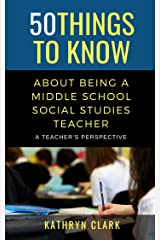The Teacher Ranger Teacher program is a professional development opportunity for K-12 teachers. It is a combination of an online class through the University of Colorado Denver and working directly with the National Park. Learn more about TRT programs here.
This summer I have been collaborating with the Lowell National Historic Park to develop lessons on voting rights and the 19th Amendment. The 100th anniversary of the 19th Amendment to the US Constitution is fast approaching. The 19th Amendment gave women the right to vote in 1920. Throughout United States history different groups of people have been denied the right to vote. Overtime these disenfranchised groups have fought long and hard to improve their working conditions, living conditions and eventually gain the right to vote.
Lowell, Massachusetts has long been a place where a disenfranchised population of women began advocating for better working conditions for themselves in the mills. These mill girls protested, petitioned the government and provided testimony all without the right to vote.
The small farming village of East Chelmsford transformed into a mill town in the early 1820s. Francis Cabot Lowell and his associates of the Boston Manufacturing Company brought the textile industry to the area.
The town grew and became the City of Lowell, named after Francis Cabot Lowell.
New England textile mills processed raw cotton shipped from the South. (Levinson,2007) Here in the mills young girls joined the workforce and began cleaning, carding and spinning cotton before weaving it into cloth. The hours were long and the conditions were dangerous. It wasn’t long before the girls began to look at ways to improve their working conditions. By the 1830s the mill girls began to challenge the mill Management. These women and girls went on strike to show their opposition to a reduction in wages. (Dublin, 1979) As Employers sought to expand production and reduce labor costs, workers began to resist. (Dublin, 1979) By January of 1845, Lowell Mill girls established the Lowell Female Labor Reform. (Levinson, 2007)
The Lowell Female Labor Reform Association (LFLRA) petitioned the state Legislature for a 10 hour work day.
We, the undersigned peaceable, industrious, hardworking men and women of Lowell...toiling from thirteen to fourteen hours per day, confined in unhealthy apartments, exposed to the poisonous contagion of air, vegetable, animal, and mineral properties, debarred from proper Physical exercise, time for Mental discipline, and Mastication cruelly limited; and thereby hastening us on through pain, disease, and privation, down to a premature grave...seek a redress of those evils.
Harriet Hanson Robinson, a Lowell Mill Girl, was a prominent figure in the Women’s Suffrage Movement. Robinson was a member of the National Woman's Suffrage Association of Massachusetts. She also wrote a book about the Suffrage Movement.
The mill girls were able to participate democratically to try and improve their lives. All of this without the right to vote. Out of this movement for better working conditions other reforms grew including abolition, temperance and suffrage for women. To understand the need for civic action to accomplish goals such as suffrage, students
should understand the historical context of disenfranchised groups making change.
Lowell NHP already offers a wide range of materials on Lowell, the Mill Girls and their struggles. These are available online and easily accessible for teachers. The idea is to expand on their repertoire of
lessons with curriculum that looks at other groups of disenfranchised people and the struggles they faced to improve the quality of their lives and to gain the right to vote. This includes looking at lowering the voting age in local municipal elections with a focus on Massachusetts.
The online course at University of Colorado Denver supports the work at the National Park. It is a 3 credit course that provides experience in Place Based Learning. The course is a blend of readings, discussions, reflections and a project determined by the Park. Teachers work at their own pace to complete the coursework.
Place Based Learning is a teaching approach that uses places as a basis for learning. Places can be historical, cultural or physical. This type of learning includes but is not limited to experiential learning, museum visits, hands-on exploration, civic engagement and service learning. Place Based Learning can happen in urban settings, rural districts and anywhere in between.
In the end, my son asked me today if I would consider doing this again. My response, "Absolutely!"
Bibliography
Dublin, Thomas. Lowell: the Story of an Industrial City: a Guide to Lowell National Historical Park and Lowell Heritage State Park, Lowell, Massachusetts. Division of Publications, National Park Service, U.S. Department of the Interior, 1992.
Dublin, Thomas. Women at Work: the Transformation of Work and Community in Lowell, Massachusetts, 1826-1860. Columbia University Press, 1979.
Levinson, Jeff. Mill Girls of Lowell. History Compass, 2007.
Myers, Jennifer. “Casting Ballots at 17? They Vote Yes.” Lowell Sun, 15 Nov. 2010.
Robinson, Harriet Jane Hanson, and Carroll D. Wright. Loom and Spindle: or, Life among the Early Mill Girls: with a Sketch of "The Lowell Offering" and Some of Its Contributors. Press Pacifica, 1976.
Robinson, Harriet Jane Hanson. Massachusetts in the Woman Suffrage Movement: a General, Political, Legal and Legislative History from 1774, to 1881. Roberts, 1883.
United States, Congress, “US Constitution.” US Constitution, 6 Mar. 2011. usconstitution.net/const.html.



 RSS Feed
RSS Feed